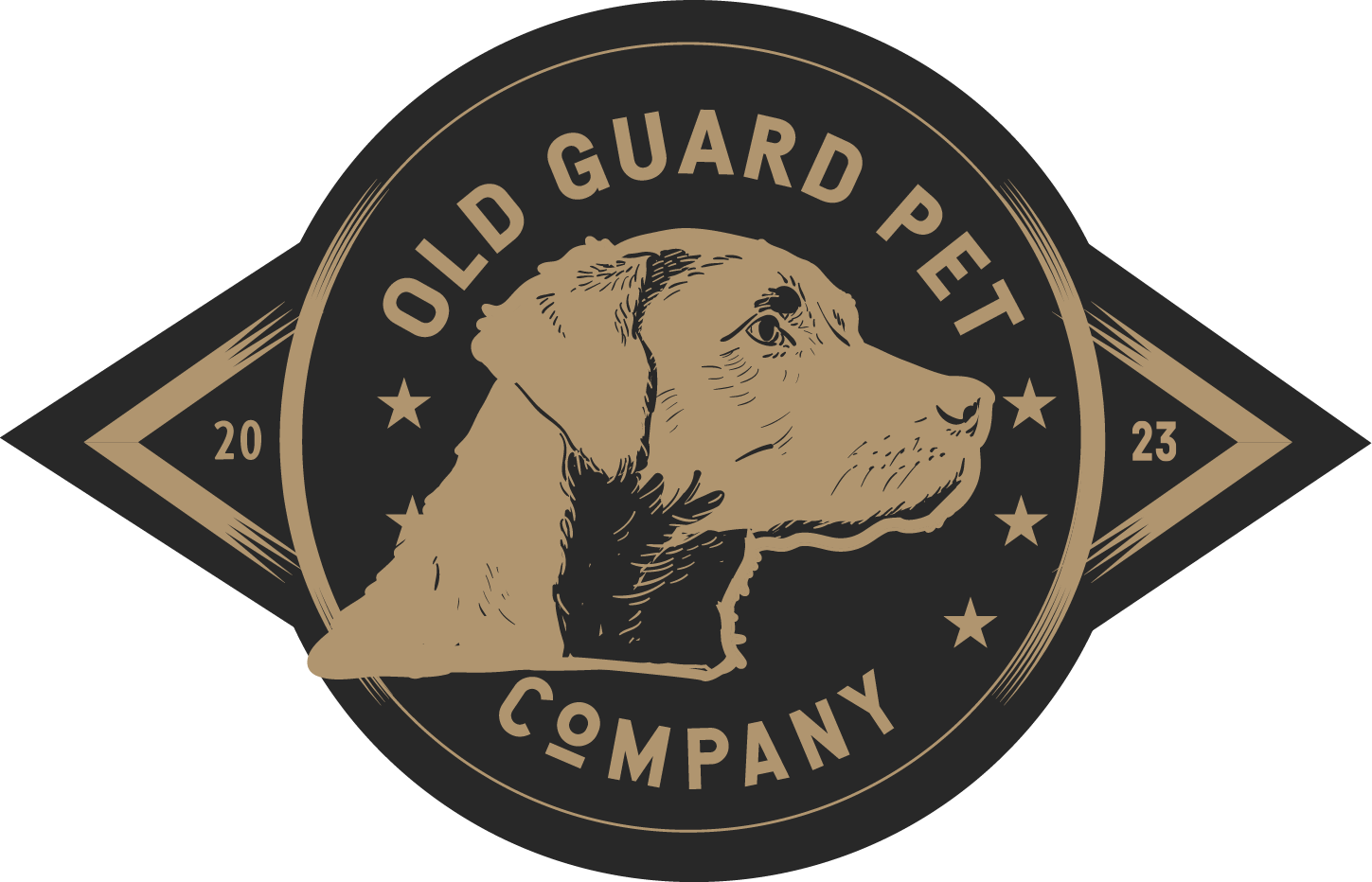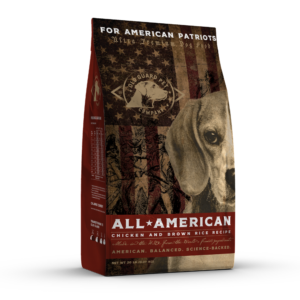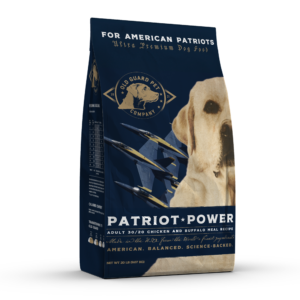One of the most controversial things someone in the pet food industry can say is that raw food is likely not the healthiest choice for your dog (believe me, I know because I have said it). When it comes to feeding our dogs, there’s an ongoing debate between kibble and raw dog food. Some believe that a raw diet is the best way to provide optimal nutrition for dogs, while others swear by the health benefits, convenience, and balance of kibble.
In this article, we aim to bust some common myths surrounding the raw dog food trend and shed light on both the benefits and challenges of feeding raw to help you better evaluate what is right for your dog. We hope that we can shed some light on the choices available to you as a pet owner and the pros and cons.
Ultimately, it is what works best for your dog that matters.
The raw food trend is growing and rooted in many misconceptions about dog health and dog nutritional needs. The raw trend is further fueled by a large distrust in kibble quality and the pet food industry in general. Those who feed raw often swear by the health benefits they see; however, what is important to consider before the format (raw or kibble) or cooking method is the dogs’ nutritional needs and then what format of food best delivers against that. The other point to highlight is the vast differences in quality, recipe design, digestibility etc. between kibble brands as well as between various “raw” foods.
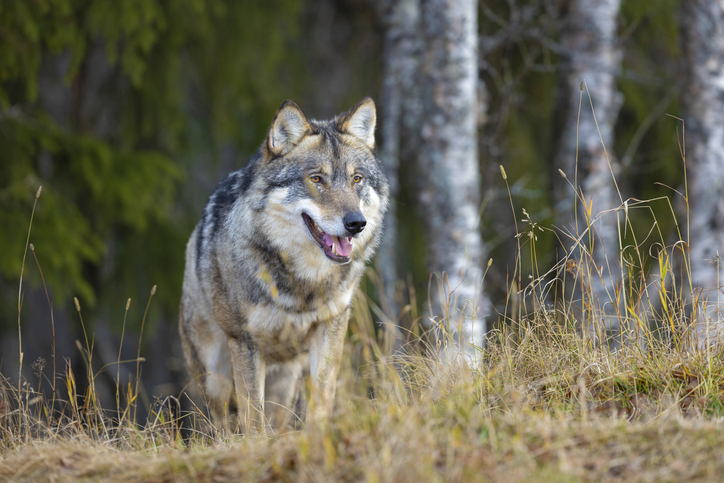 Myth 1: Dogs are descendants of wolves and should be fed an ancestral, raw diet like wolves
Myth 1: Dogs are descendants of wolves and should be fed an ancestral, raw diet like wolves
Supporters of raw argue that the recipes are more biologically appropriate and nutrient-dense as they contain more meat and are uncooked. The belief is that kibble contains too many carbohydrates. Proponents of raw feeding believe that dogs are natural carnivores and should consume a diet consisting primarily of raw meat, bones, and organs. While it’s true that dogs are descendants of wolves and have carnivorous tendencies, their nutritional needs have evolved over time and dogs show more omnivorous traits (meaning their diet is natural consisting of both meat and plant material).
We review the significant differences between dogs and wolves in our blog Dog and the Wolf: Similarities and Differences and the Impact of Evolution on Nutritional Needs (oldguardpetco.com) and the benefits of certain carbohydrates (since not all have the same impact on dog health) for dogs in our blog Unlocking the Truth About Carbohydrates for Dogs’ Health (oldguardpetco.com). However, to summarize, dogs have evolved significantly from wolves, and this was largely driven by the food and environment they were exposed to. The domestication of dogs has led to certain physiological changes that have allowed them to digest and utilize a wider range of food sources. This is why kibble, which contains a combination of proteins, grains, and vegetables, can adequately meet a dog’s nutritional needs. This balance of plant and meat isn’t new and didn’t start with kibble, in fact, there is evidence that in 7000 BC some dogs were eating diets that contained majority grains (millet, an ancient grain, specifically) as they lived alongside humans. Certain dogs, and even wild wolf breeds (maned wolf) cannot tolerate the high protein and fat content in raw foods. Even some leading experts in zoo nutrition suggest that kibble can make up most of the wolf diet in captivity to support ideal health due to the environmental factors (significant low energy needs) and longer life spans in captivity as well as the challenges of balancing raw diets in captivity (AZA Canid TAG 2012).
Over time, dogs evolved ten genes involved in digestion and fatty acid metabolism during the domestication process. Similarly, three genes (AMY2B, MGAM, SGLT1) have been identified as selective candidates that play key roles in the breakdown of starch. Dogs also have functional amylase and maltase enzymes all essential for starch or carbohydrate breakdown and these differ significantly from wolves (the maltase enzyme structure even mimics that of herbivores).
So, what do we know about the “modern” dog’s ability to acclimate to a raw diet? Actually, very little. However, in one recent study where dogs were transitioned to a raw recipe, their gut microbiome, or the natural bacteria of the GI tract, didn’t shift to exactly mimic the wolf. This suggests that dogs cannot fully acclimate to a raw diet in a similar way to the wolf. It is imperative to support a healthy gut microbiome since this can impact whole body health because it impacts how your dog absorbs and utilizes essential nutrients.
Myth 2: Raw, because it is uncooked and unprocessed, is more nutrient dense and balanced than kibble
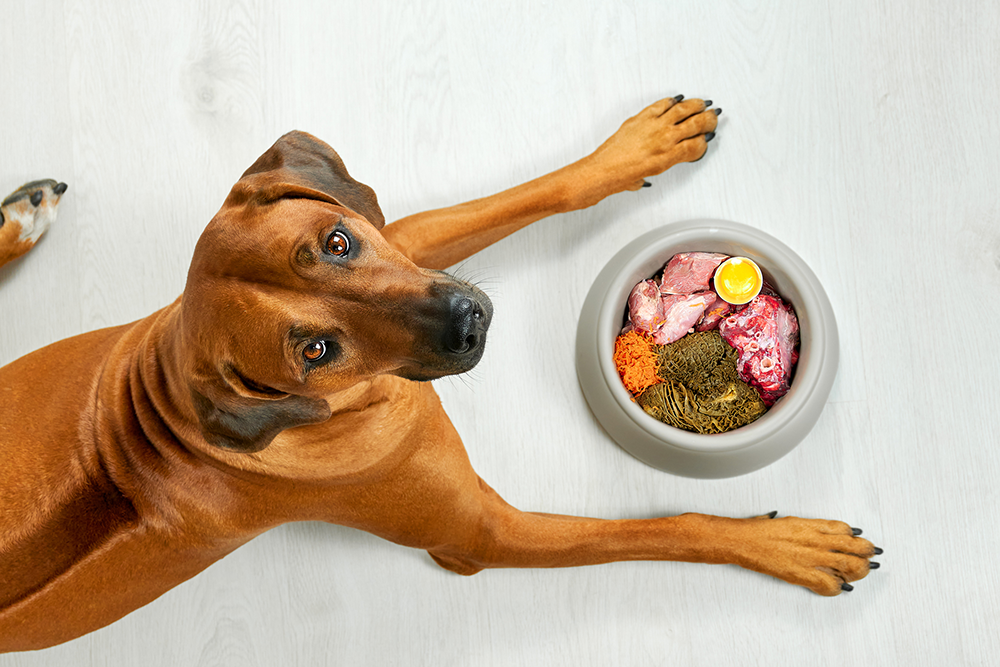
As raw recipes have become more popular and commercially available, the likely imbalance of essential nutrients has declined, and this can still be a problem in some kibble recipes without proper formulation and expertise. Despite this improvement, many veterinary health professionals and nutritionists critique raw as being imbalanced and in a recent study, 31 commercially available raw recipes were analyzed and approximately 25% had discrepancies between declared nutrient content and actual analyzed levels. Most homemade raw recipes are also imbalanced or have nutritional deficiencies that have sadly caused serious health consequences in dogs that become especially apparent in puppies and younger growing dogs. Typical imbalances related to raw diets include having a higher fat content than disclosed, calcium and phosphorus levels that are too high or low and have been shown to impair proper bone development and vitamin D imbalances, to name a few. Again, this can be a problem with poor quality kibble as well.
While raw is uncooked, there are new methods of processing these raw recipes to reduce the natural bacterial load called HPP or High-Pressure Processing where the product is placed in a water-filled chamber and then subjected to 87,000 pounds of hydraulic pressure per square inch (more pressure than you would feel, or not feel because you would be dead, at the deepest part of the ocean). This is essentially done to crush the microbes but, it is not a regulated or a standardized method nor considered as effective as a “kills step” used in the cooking of kibble. This process also has impacts on protein, causing denaturation and causes color changes to occur. If a company is using this method, their food also then is highly processed even though they may continue to label it as “unprocessed raw food”. It is also unknown how freezing and thawing food impacts product taste, nutrient integrity and acceptance with dogs.
Ideal cooking of kibble can be met. Temperatures should meet food safety standards to eliminate the harmful bacteria, improve flavor and bioavailability of certain nutrients and destroy certain anti-nutritional factors in certain ingredients, however, overcooking should be avoided since this does create unhealthy by-products and does destroy essential nutrients. What is important is balance and that companies check the nutritional composition of food after cooking.
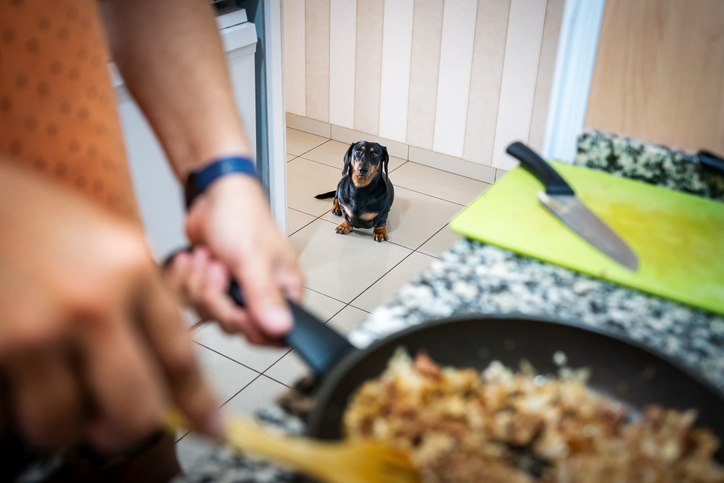 Myth 3: Raw is safe for my dog and me
Myth 3: Raw is safe for my dog and me
This is a truth and myth. Raw can be a safe food for dogs since dogs can naturally tolerate certain bacterial loads. There also haven’t been widespread reports of illness related to raw food feeding. But raw recipes have been shown to have much higher frequencies of bacterial contamination than cooked foods. Some research groups have reported salmonella contamination ranging between 5% -50% of raw food tested depending on the study (kibble in comparison was around 0.2% in this analysis), and, in another study, more than 50% of raw products tested were found to exceed the regulatory allowable threshold for Enterobacteriaceae and in another study 60% of raw meat commercially available for dog foods are contaminated with generic E. coli. Other contaminants may include Listeria and Campylobacter.
As mentioned, while healthy dogs can tolerate salmonella etc., humans and especially pregnant women, young children/infants, the elderly and immunocompromised humans and even dogs cannot and may become ill with exposure. While dogs eating any diet can shed various bacteria into the environment through saliva and feces, dogs testing positive for salmonella are more likely to consume a raw diet. Certain health agencies and veterinary teams are also concerned with the increase in bacteria populations and the associated increased risk for more antibiotic-resistant bacteria. Despite increased risks, owner reports of illness are low and testing following reports of illness is rarely done making the assessment of bacterial transmission unclear and in need of more rigorous understanding. Also, kibbles or any form of food can be contaminated if the cooking steps are not completed appropriately. Overall, since there is an increased risk of food-related bacterial contamination with raw foods, this risk has led to some therapy dog organizations banning raw food for the dogs in those programs. Similarly, the FDA, AVMA (American Veterinary Medical Association), AAHA (American Animal Hospital Association) etc. have all issued warnings about the risks of feeding raw foods to your dog.
Across all food types, but especially raw, it is imperative that owners practice safe handling practices (wash hands after feeding, wash and sanitize bowls after each meal and regularly for kibble meals too) and keep children away from the food and bowls. Make sure the bowls are stainless steel to be effectively cleaned.
Myth 4: Raw has more health benefits than kibble
Many raw food advocates will say they saw an improvement in their dog’s health after switching to raw food. This perception has created a loyal following of raw feeding pet owners. This is understandable since we want to do the best for our dogs and the pet food industry has gained a significant amount of distrust from consumers.
However, from a research and objective basis the scientific validation for this claim remains unproven. At Old Guard, we are always wanting to do the best for the dog and we do that through reliance on traditionally proven methods and those backed by decades of high-quality research, not opinion or fads. It would be a great win for dog health and well-being if raw food companies invest in research and continue to learn more about the impact of raw foods on dogs, however, to date they have mostly not. There are only a very limited handful of studies published to support the health claims they make:
- One study claims dogs fed raw foods have lower risk for skin and GI related allergies which is interesting, however, this was a survey based on owner reports which is a non-controlled research method and was only done in puppies. Furthermore, it is unlikely that the format of the food, and not ingredients will cause food related sensitivities and additionally, beef is both the number one reported allergen and a common ingredient in raw recipes.
- Another more controlled study concluded that raw and fresh food had improved digestibility vs. kibble; but again, only certain recipes, including poorer quality kibbles were tested. Higher quality kibbles have also been shown to have improved digestibility similar to the raw and fresh food as reported in the study. Further, digestibility is only part of the story. Certain fiber sources can reduce digestibility, and this is the exact benefit for including them in the diet. Non digestible fiber like cellulose can aid in gut motility and promote healthy stool quality.
No other health claims related to raw have been researched for publication in peer reviewed journals to our knowledge, though you will see companies claiming many other health benefits. The opposite is true for kibble formats, which is the most researched format along with ingredients that have been cooked in kibble. As an example, a single ingredient, beet pulp, in dog food have at least 15 peer reviewed studies behind its use and potential impacts on gut health for dogs. A single ingredient used in some kibble recipes has more research than all raw foods on dog health. While the volume of research does not dictate what is best for your dog, we suggest caution in trying out new things and also ask your vet or even the company you are buying from.

KEY SUMMARY
If raw works for you and your dog, that’s good, dog health is our priority. Just be sure to keep up with recalls, follow appropriate handling and safety practices and make sure your vet is checking your dog’s health. Our intention is not to be critical of raw in general but to clarify the benefits, risks and realities of various types of food for dogs so, you can make the right choice.
What is concerning is the prevalence of misconceptions about the healthfulness of raw food vs. kibble. Not all kibbles are the same, nor are all raw foods. However, the growing perception of superiority of raw overall kibble is largely driven by a misunderstanding for the dog’s unique evolution and dietary needs and companies capitalizing on trends. Our goal, at Old Guard, is always to support each dog’s health needs. The balance of ingredients and bioavailability of nutrients that we can deliver in kibble is why our recipes are focused on this format. We will ensure we cook our food perfectly using our unique slow cooking method and we will leverage ingredients that have been shown to support your dog’s health ensuring they are in perfect balance with each bite.
References:
- Animals | Free Full-Text | From Nutritional Adequacy to Hygiene Quality: A Detailed Assessment of Commercial Raw Pet-Food for Dogs and Cats (mdpi.com)
- Abnormal bone mineralization in a puppy fed an imbalanced raw meat homemade diet diagnosed and monitored using dual‐energy X‐ray absorptiometry – Dodd – 2021 – Journal of Animal Physiology and Animal Nutrition – Wiley Online Library
- Severe nutritional deficiencies and osteopenia in a dog fed a homemade raw diet – Hall – 2020 – Veterinary Record Case Reports – Wiley Online Library
- Raw or undercooked animal-source protein in cat and dog diets | American Veterinary Medical Association (avma.org)
- Raw Protein Diet (aaha.org)
- Raw diets for dogs and cats: a review, with particular reference to microbiological hazards – Davies – 2019 – Journal of Small Animal Practice – Wiley Online Library
- Evaluation of bacterial and protozoal contamination of commercially available raw meat diets for dogs in: Journal of the American Veterinary Medical Association Volume 228 Issue 4 () (avma.org)
- 866d34a3863eacc33ef206ff93e213d49c58-libre.pdf (d1wqtxts1xzle7.cloudfront.net)
- Frontiers | Low Number of Owner-Reported Suspected Transmission of Foodborne Pathogens From Raw Meat-Based Diets Fed to Dogs and/or Cats (frontiersin.org)
Five Dog Food Nutrition Secrets From a PhD
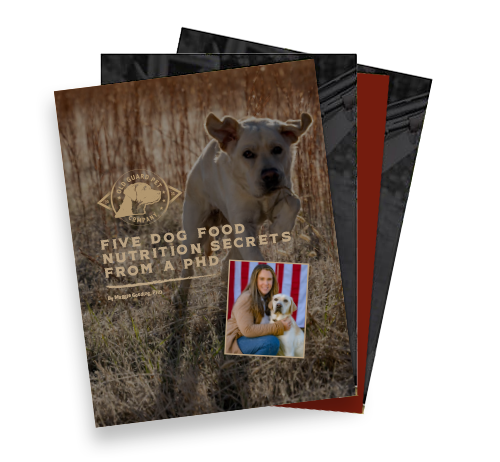
With so much information floating around out there on dog nutrition, how can you be sure you have the facts? In this guide, Founder Maggie Gooding, PhD, in Animal Nutrition and Behavior, with over a decade experience in R&D working on some of the largest pet food brands share five nutrition secrets to help your dog live a longer healthier life.
Get the inside scoop on:
- Nutrients
- Energy Balance
- Weight Control
- Dog Eating Habits
- Fibers and Fillers
Download by filling the form out below:
